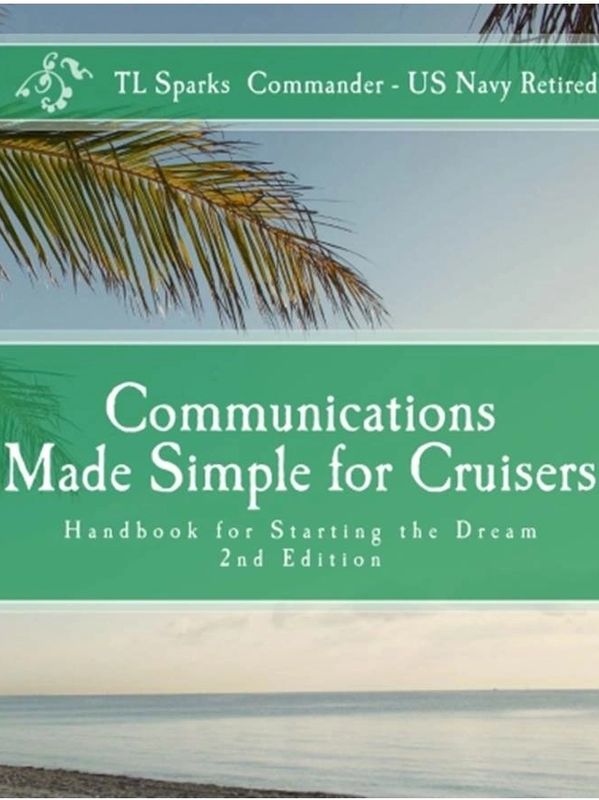Basic Communications

Communications Made Simple for Cruisers Volume 3
"Communications Made Simple for Cruisers" provides the basics and details to help cruisers identify communications equipment, software, and licensing that is needed to cruise around the world safely.
There are many options to communicate when you are cruising. It is never as simple as just picking up the phone and dialing at sea.
Communications Made Simple for Cruisers" covers:
- Basics of communications
- VHF Radios
- High Frequency Single Side Band (HF SSB) Radio
- Satellite phones
- HF SSB Email
- Cruising software
- Communications license(s) needed
- Land line telephones in other countries.
If you are planning to cruise the Sea of Cortez, you will meet Geary on the Sonrisa net. (3.968MHz). Geary only recommends two books for all cruisers. "Sea of Cortez" and "Communications Made Simple for Cruisers".
If you plan to go Cruising you need an HF SSB radio, VHF Radio, EPIRB, Radar, and possibly a Spot. If you do not have these basic tools on your boat now, consider waiting till you have them.
The Sat Phone is a nice backup to routine communications via HF and VHF radio. However, Sat phones are a one to one call while HF SSB and marine VHF are one to many for help.
If I need help I want every commercial ship around me to know about it.

GMDSS Made Simple for Cruisers Volume 7
Global Maritime Distress and Safety System (GMDSS) Made Simple for Cruisers is for all Boaters Fishermen and Cruisers.
Occasionally Cruisers get into trouble thousands of miles from shore. The cruising world changed in the 1999 and again in 2005. Believing the myth that someone is listening for a Mayday on one of the many commercial vessel crossing the ocean, could result in a very bad day for you and your crew.
GMDSS was designed using modern technology and then implemented to save lives and improve overall Safety of Life at Sea. GMDSS was fully implemented February 1, 2005. The good news is there is now more help at sea than ever before, but as a Cruiser you need to understand how to access that help and have the right technology on board.
NOTE: 11/25/2015 I received an email from the IMO today. While the rules stated that GMDSS vessels were only required to monitor DSC on VHF 01FEB2005, the IMO decided to require them to continue monitoring channel 16. My experience cruising is they may monitor it, but they always respond to DSC. Learn to use DSC if you want to tie into the GMDSS system. Trust me you do!
Don’t listen to the old cruisers of the 80s that crossed the seven seas with only a hand held compass. Get the right tools to increase the probability you and your crew will return to your home port.
Copyright © 2023 Made Simple for Cruisers - All Rights Reserved.
Powered by GoDaddy
This website uses cookies.
We use cookies to analyze website traffic and optimize your website experience. By accepting our use of cookies, your data will be aggregated with all other user data.
